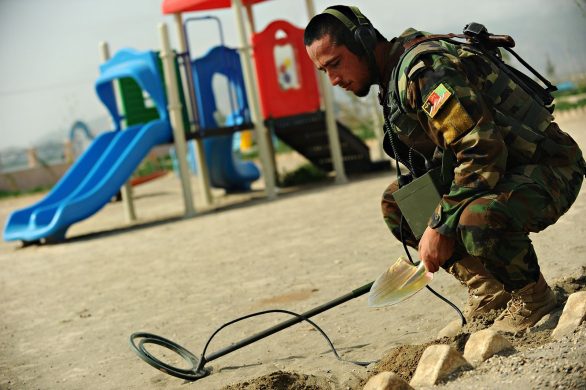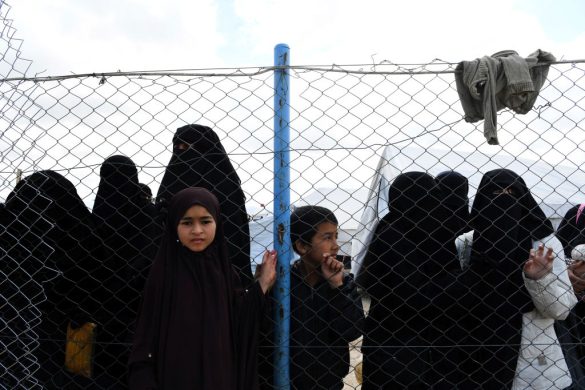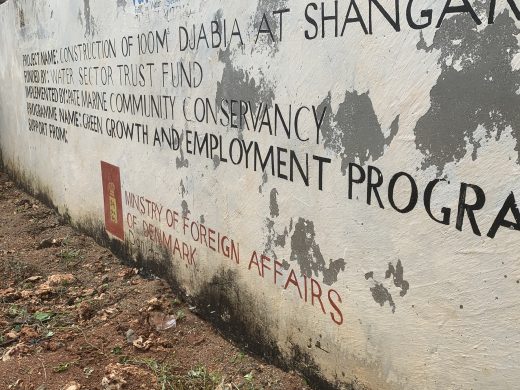Two decades after the treaty banning antipersonnel landmines opened for signature, new use of the weapons by states is extremely rare and countries continue their efforts to end the landmine scourge by 2025, says Landmine & Cluster Munition Monitor in a press release.
However, according to Landmine Monitor 2017, armed conflict in Afghanistan, Libya, Ukraine, and Yemen contributed to a second year of exceptionally high casualties caused by mines, including improvised devices that are triggered like mines, and other explosive remnants of war (ERW).
This latest annual report of the Nobel Prize-winning International Campaign to Ban Landmines (ICBL) was released in December 2017.
“A few intense conflicts, where utter disregard for civilian safety persists, have resulted in very high numbers of mine casualties for the second year in a row,” said Loren Persi, casualties and victim assistance editor of Landmine Monitor.
“This shows the need for all countries to join the Mine Ban Treaty and for increased levels of assistance to mine victims,” he added.
For calendar year 2016, the Monitor recorded 8,605 mine/ERW casualties, of which at least 2,089 people were killed.
Aldrig tidligere så mange børn dræbt
Following a sharp increase in 2015, the casualty total in 2016 marked the highest number of annual recorded casualties in Monitor data since 1999 (9,228), the most child casualties ever recorded, and the highest number of annual casualties caused by improvised mines.
Despite being weapons of war, mines/ERW mostly kill and injure civilians, who made up 78% of all recorded casualties in 2016, similar to past years.
More positively, in 2016 international donors increased their support for mine action, an umbrella term that includes clearance, victim assistance, risk education, stockpile destruction, monitoring, and advocacy.
Stigning i finansiering
Thirtytwo donors contributed US$479.5 million for mine action in 40 states and three other areas, an almost $85.5 million increase from 2015.
With contributions by affected states to their own national programs totaling $85.0 million, global contributions to mine action amounted to approximately $564.5 million, an increase of nearly $40 million compared to 2015.
In 2016, countries continued the labor-intensive work to make previously mined areas safe for use, reporting about 170 km2 of land cleared of landmines—a level similar to 2015—and the destruction of more than 232,000 landmines—a significant increase compared to 2015.
In 2017, Algeria and Mozambique declared themselves free of landmines.
Kun fire lande ud af 33 ser ud til at nå mål
Among the 61 countries and other sovereignty-disputed areas that are known to have mine contamination, 33 are States Parties to the Mine Ban Treaty, which calls for clearance of known contamination within 10 years.
Only four of those appear to be on track to meet their deadlines: Chile, Democratic Republic of the Congo, Mauritania, and Peru.
“It is encouraging that international donors increased their support to mine action in 2016 and that more countries are becoming landmine-free,” said Jeff Abramson, program manager of the Monitor initiative and final editor of Landmine Monitor 2017.
“Sustained and even greater determination is needed to achieve the goal of a mine-free world by 2025,” he added.
At the most recent treaty review conference, States Parties committed to complete their respective time-bound obligations by 2025.
To landes regeringsstyrker har lagt nye anti-personelminer
New use of antipersonnel mines by states remains a relatively rare phenomenon, with Myanmar and Syria— both states not party to the Mine Ban Treaty—again having the only government forces actively planting the weapons during the past year (October 2016 to October 2017).
Over that time, non-state armed groups used antipersonnel mines, including improvised mines, in at least nine countries: Afghanistan, India, Iraq, Myanmar, Nigeria, Pakistan, Syria, Ukraine, and Yemen.
The Mine Ban Treaty, which became international law in 1999 and today has 162 States Parties, bans the use of mines that detonate due to human contact, also known as “victim-activated,” and thereby encompasses improvised explosive devices (IEDs) that act as antipersonnel mines, also called “improvised mines.”
Additional key findings from the report include:
- Collectively, States Parties have destroyed more than 53 million stockpiled antipersonnel mines, including more than 2.2 million destroyed in 2016.
- Belarus completed the destruction of its stockpiles in April 2017.
- States Parties Angola, Ecuador, Iraq, Thailand, and Zimbabwe are awaiting approval of landmine clearance extension requests at the Sixteenth Meeting of States Parties in December 2017.
- Ukraine is in violation of the Mine Ban Treaty due to missing its 1 June 2016 deadline for mine clearance without having requested a deadline extension. It is also in violation for having missed its stockpile destruction deadline.















